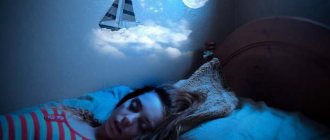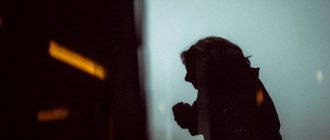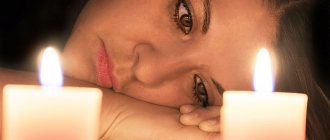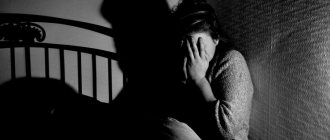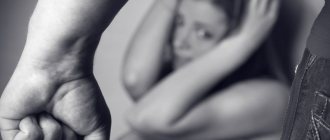Every person suffers from various phobias to one degree or another. If the fear of the dark, heights and the like are more or less understandable, then, having discovered the fear of clowns, many do not know how to treat it correctly. Children suffer most from phobias, although disorders among adults are not uncommon. Psychologists highlight the reasons for such fear and note that if you do not fight it, you can get a mental illness.
A fear of clowns can appear even at an early age in children.
The emergence of coulrophobia in modern society
Studying what coulrophobia is and how it arose, experts recall the last century, when horror films with the participation of negative characters represented by clowns became widespread. It is believed that the rise of the disorder was provoked by the horror film “It” based on the work of Stephen King, in which the main character, a clown, kills children.
Fear of dolls - what is this phobia and what is it called?
Numerous novels also contributed to the emergence of fear; in them, the jester appears in the form of a monster.
Originating in childhood, the fear of clowns can haunt a person into adulthood, although many people hide it from others. This phobia is not considered dangerous to health, since in reality you can avoid the provoking factor without visiting the circus or watching films with a similar plot.
It is enough to be attentive to children in order to avoid the object of fear. Although sometimes parents act in the opposite way. Not realizing that the child suffers from a phobia, they take him to a circus performance or a children's party with the participation of jesters.
Important! If a child begins to panic at the sight of a disguised artist, you must immediately take him away and calm him down. In severe cases, it is recommended to consult a psychologist to correct behavior.
Symptoms may include:
- Nausea
- Headache
- Fainting
- Sweaty palms
- Abdominal pain
- Dry mouth
- Breathing problems
- Feeling of fear (horror)
- Loss of normal mental stability
- Feeling of unreality.
You can also try to avoid clowns and even the sight of clown paraphernalia at all costs. For example, you may avoid children's parties or avoid watching certain movies and shows. These symptoms can appear either all or selectively.
Signs of coulrophobia in adults and children
Fear of dogs - what is the name of the phobia?
A distinctive feature of the disorder is that coulrophobes experience fear not only when meeting artists, but even paraphernalia: pictures, toys, a clown’s voice.
According to research results, it was revealed that a phobia of clowns with the name of their attributes manifests itself even at an early age. If you miss the situation, fear will gradually transfer to preschoolers and schoolchildren.
When meeting a frightening character, a person may show signs of inappropriate behavior
The most common signs indicating the presence of a phobia in a person when meeting a real or abstract character are highlighted:
- panic attack with rapid heartbeat, increased sweating, numbness of the arms and legs, dizziness;
- avoiding entertainment events, circuses, films, cartoons, as it is possible to meet a frightening character or paraphernalia;
- defensive reaction: the patient may scream, attack the artist with his fists, or show any aggression;
- constant nightmares in which a person is haunted by the image of a clown.
The clown from the Good side, or the favorite clown of my adolescence - “The Man Who Laughs”:
The word became widespread thanks to Victor Hugo's novel The Man Who Laughs
» (1869).
The Comprachicos criminal community itself
Hugo compares it to the Masonic organization. They have their own laws, customs, traditions and even their own language.
Gwynplaine
is a romantic hero who opposes the inert world around him... Hugo draws attention to the fact that in some historical eras, for example, under the English Stuarts, the activities of the Comprachicos were even encouraged. After the overthrow of the Stuarts, the Comprachicos were declared criminals in England. Their leaders were hanged, and ordinary members were branded. Following England, France, Spain and the Netherlands banned the activities of comprachicos on their territory. [1]
In modern cinema you can see this phenomenon in the film about the Indian poor “Slumdog Millionaire”
A song called "Comprachicos" appears on the album Immersion by Australian drum'n'bass band Pendulum.
Source: Wiki.
Reasons for fear of clowns in children and adults
Experts, answering the question of why people are afraid of clowns, see the main reason in negative experiences that have cemented the image of an evil character in the subconscious.
Probable reasons:
- An equally important factor is fear of the unknown. A small child may be frightened by the mask on the artist’s face, behind which the real person is not visible.
- A significant reason is the unnatural behavior and antics of the jester. Often people have a negative attitude towards feigned laughter, overly emotional facial expressions and gestures.
- Stupid jokes and the unpredictability of disguised performers, who become unrecognizable and allow themselves free behavior, are frightening.
The cause of coulrophobia in a person is often a negative image of a character.
- Among the social reasons, the reluctance of many to speak publicly stands out. At the festival, this is exactly what clowns do, dragging out an unprepared person for the amusement of the public. As a result of such an action, a feeling of awkwardness arises, which develops into the subconscious cause of coulrophobia.
- Some people develop an unconscious antipathy towards pretentious elements in clown images. Coulrophobes cannot stand excessive face paint, huge wigs, ridiculous noses and absurd costumes. Such internal rejection of the appearance of artists often turns into fear of their characters.
Why are children afraid of clowns?
- Most young children are afraid of everything new, especially strangers. Therefore, an unfamiliar clown who screams loudly, laughs unnaturally, waves his arms, pesters the audience, causes panic in the baby.
- In addition, children are much more sensitive to ridicule from the public than adults. If an adult is able to control his emotions or accept jokes with a degree of self-irony, then the baby does not even understand why they laugh at him, which means he cannot protect himself from ridicule, especially in the absence of his parents.
- Artistic makeup and costume do not allow the child to determine the gender of the clown; the inability to understand who is in front of him, a man or a woman, frightens him. In addition, children sense the sincerity of other people more subtly, therefore feigned fun and a mask with a false smile repel the little viewer.
False and feigned behavior of clowns leads to fear in children
Coulrophobia in an adult
A phobia of clowns is not limited to children; adults often suffer from this fear. Psychological surveys of Internet users showed that almost 80 people out of a hundred respondents have a negative attitude towards clowns, do not go to the circus, and consider clownish humor primitive. There are opinions that laughter at clown jokes is similar to nervous grimaces to hide emotional tension.
The main cause of phobia in adults can be called negative childhood experiences with artists and fear hidden in the subconscious. Many coulrophobes associate the image of a clown with a mentally abnormal person from whom one can expect anything.
Getting rid of coulrophobia in adults is difficult due to the fact that they are embarrassed to admit to such a “funny” disease and seek help from a specialist. It seems to them that it is easier to exclude possible unpleasant encounters with the object of fear than to dump their problem on a psychotherapist. This often leads to aggravation of the situation.
Important! Prolongation of the problem of fear leads to the development of a severe form of coulrophobia. A person sees frightening images everywhere: in the dark, in nightmares, in painful fantasies about threatening danger. Therefore, it is necessary to contact a specialist as early as possible.
Coping methods
Usually, psychological techniques that help children are sufficient to treat an adult. Visualization (materialization of thoughts) is considered effective when one gets acquainted with funny clowns and clowns in pictures and photos, wearing cute toys that will not do anything bad. It's good to play with them, taking on their role. This will make it possible, under the guidance of a psychotherapist, to overcome a negative attitude towards the character. Then, when the nervous state normalizes and the negative emotions subside, you can organize a real meeting in the presence of other people with the object of your fear.
An effective method of overcoming coulrophobia is the visualization of funny clowns in the form of drawings or toys.
In especially severe cases, special techniques are used:
- Relief of the condition with medications (antidepressants and sedatives) to relieve panic attacks and increased nervous excitability.
- For severe panic attacks, hypnotherapy sessions are prescribed. A person stops reacting sharply to sources of fear after influencing the work of the subconscious.
- Psychotherapeutic techniques help relieve tension and overcome phobias: a conscious attitude towards fear, working through the reasons for its occurrence, drawing, describing the fear and taking it under control.
Treatment
How to get rid of coulrophobia
Fear cannot be treated with medication using any medications. A positive effect occurs only with the use of psychotherapeutic methods.
To achieve recovery, a psychotherapist uses the following techniques:
:
- The doctor explains to the patient that even the most intense fear is not capable of causing significant harm to his health. And coulrophobia is a temporary phenomenon.
- Identifying a traumatic situation in the past, searching for the causes of fear in the patient’s thinking and character traits. The patient reconsiders his personal drama and changes his attitude towards what happened. As a result, internal contradictions are resolved.
- Gradual contact with the object of your phobia. The patient meets an actor playing the role of a clown. After which, he participates in the process of applying makeup to the actor’s face and in choosing the appropriate costume.
- A person experiencing fear himself puts on the image of a comic character and understands that performing the image of a jester in front of an audience is a clearly rehearsed role with a written script.
- Watching good films and cartoons featuring pleasant and cute clowns.
When experiencing fear of the appearance of a jester, the patient must understand that his reaction may be completely natural, due to some personal psycho-emotional reasons in the depths of the subconscious.
How to get rid of your child's fear of clowns
If it is noticed that the baby has developed an antipathy towards clowns, it is necessary to control the situation:
- You should start with cartoons about good clowns, as positive heroes doing good deeds.
- Games, books, and circus toys help a lot.
- To overcome your child's fear of clowns, it is useful to organize a costume party at home. You and your child can dress up as clowns, portray funny emotions on their faces and show funny scenes, and give balloons.
- Another option is useful: one of the parents puts on a clown costume and has fun communicating with the baby. In this way, you can let the little one understand that under the mask there is an ordinary person.
- When visiting the circus with your child, you should choose sessions in which the program is aimed at child spectators.
A costume party will help rid your child of his fear of clowns.
General information
Coulrophobia is a pathological fear of clowns and mimes . It is considered a generally recognized phobia and is listed in the International Classification of Diseases, 10th Revision (ICD-10) under the code F40.2 of specific (isolated) phobias limited to very limited situations.
Many people don’t know what the fear of clowns is called, but after the release of the film “Harry Potter and the Prisoner of Azkaban” this problem was given wider publicity. The term coulrophobia refers to neoholism and comes from the Greek word “colbatbristes” - translated as walking on stilts.
Phobias should be strictly distinguished from delusions. With phobic syndrome, the patient is clearly aware of the obsessive, painful nature of the fear that overcomes him, which is a distinctive feature of the neurotic level of disorders.
Still from the film “Harry Potter and the Prisoner of Akaban”
Consequences of a phobia of clowns
Coulrophobia is not a self-limiting anxiety, even if there is no object of panic. In reality, few people encounter performers in disguise, so fear may not be reinforced by the object, but manifest itself in another way.
A lot of trouble is caused by others who, having learned about the “funny” phobia, mock and show misunderstanding. Therefore, coulrophobes are more likely to take offense at people who make fun of their weaknesses.
Many people think that they can avoid the discomfort of a phobia if they do not attend circuses and festive events. However, an unexpected encounter with a frightening object may occur, so coulrophobes need corrective work.




